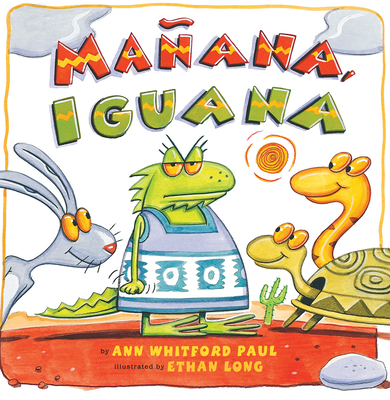
On Monday, Iguana happily announces that she wants to throw a party on Saturday to celebrate the beginning of spring. Her friends excitedly agree. She asks for help writing the invitations. Conejo (rabbit) says that he writes too fast. Tortuga (turtle) says that he writes too slowly. Culebra (snake) does not have arms to write. Since she can’t wait until tomorrow, Iguana writes the invitations herself. When it is time for Iguana to deliver the invitations, her friends come up with the same excuses; Iguana has to deliver the invitations herself. When Iguana asks her friends to help stuff the piñata, they use the same excuses. Iguana stuffs the piñata herself. The same thing happens when Iguana needs help cooking the food and decorating for the party. She begins to get frustrated with her friends because they are not helping her throw the party. Finally it was Saturday, the day of the party. When the guests began to arrive, Conejo, Tortuga, and Culebra run to meet the guests. Iguana stops them, announcing that since she did all the work, she will greet the guests. Her friends walked away, ashamed, and watched everyone have a great time at the party. Once the guests had left, Iguana was exhausted. She lay down to sleep, vowing to clean up the mess tomorrow. Her friends decided that they would clean up, since Iguana did all the work preparing. Iguana woke up, saw all of the work that her friends had done, and was very thankful. On Sunday, they sat together and happily ate the leftovers.
Mañana, Iguana is full of Spanish words (there is even one in the title!). There are over fifteen Spanish words throughout this picture book, which are in italics. The definitions for these words can be found at the beginning of the book. This would be a great read aloud to do at the beginning of the year. I think that it is important that ELL (English Language Learners) feel included in the classroom. In order to build a classroom atmosphere that helps ELL students feel this way, picture books on Spanish culture should be included. You can read the book and ask if any of the students know what the Spanish words mean. ELL learners will be able to define the words and feel like they are contributing to their peers’ knowledge. As the teacher, you can write the words down on index cards and include them on word walls.